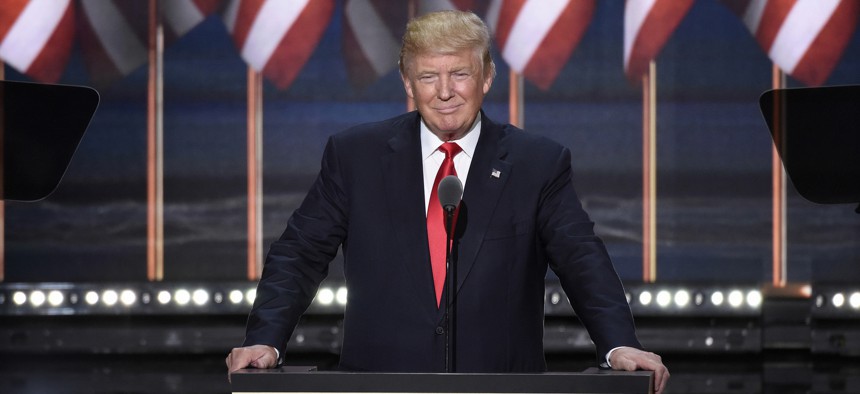
Disney/ABC Television Group, via Flickr
It was almost an afterthought in Donald Trump’s GOP nomination acceptance speech Thursday night, but in the midst of a law-and-order, America-first, no-more-bad-trade-deals address, there was a promise for a good old-fashioned war on waste in government.
“We are going to ask every department head in government to provide a list of wasteful spending projects that we can eliminate in my first 100 days,” Trump said. “The politicians have talked about it; I’m going to do it.”
It’s worth examining that pledge in a little more detail, because it says a lot about how Trump would actually try to run government — and the huge challenge he would be up against.
For starters, Trump’s plan presupposes that heads of federal departments (who would by and large be acting officials in the first 100 days, until Trump’s appointees were confirmed), have control over eliminating projects. They don’t, and neither does Trump himself. By and large, ending federal programs is up to Congress. And historically, lawmakers have shown little interest in cutting projects that, after all, they approved at some point.
Trump’s plan also assumes that agency heads have an interest in cutting the programs they oversee. Generally, those people are in their jobs because they think the projects they’re responsible for are worthwhile. So they may not be the best people to identify efforts that are unnecessary or wasteful. (Of course, you could always try to fire federal executives who aren’t on board with your agenda, but that’s at best a more than 100-day proposition.)
Also, Trump’s proposal is hardly novel. Virtually every president pledges to eliminate wasteful, unnecessary programs, often in about 100 days after taking office. On May 7, 2009, for example, President Obama proposed $17 billion worth of “terminations, reductions and savings.”
Presidents also almost always launch longer-term efforts to attack waste in government. In just recent history, consider President Reagan’s vaunted Grace Commission, promising $424 billion in savings in three years. Or Bill Clinton’s high-profile Reinventing Government campaign, led by Vice President Al Gore, which pledged nothing less than a government that “works better and costs less.” That was followed by George W. Bush’s President’s Management Agenda and Program Assessment Rating Tool, which was specifically designed to root out underperforming, wasteful projects. Obama launched a Campaign to Cut Waste in 2011.
What these efforts all have in common is that none made a lasting impact on cutting federal spending.
Among Trump’s touted strengths is his business acumen, and his waste-cutting proposal is on the high end of the run-government-like-a-business scale. His promise is not just to identify wasteful spending, but to succeed where others have failed in eliminating it. If Trump is elected, he will likely get an early lesson in just how difficult it is to do that.
Photo: Disney/ABC Television Group, via Flickr







